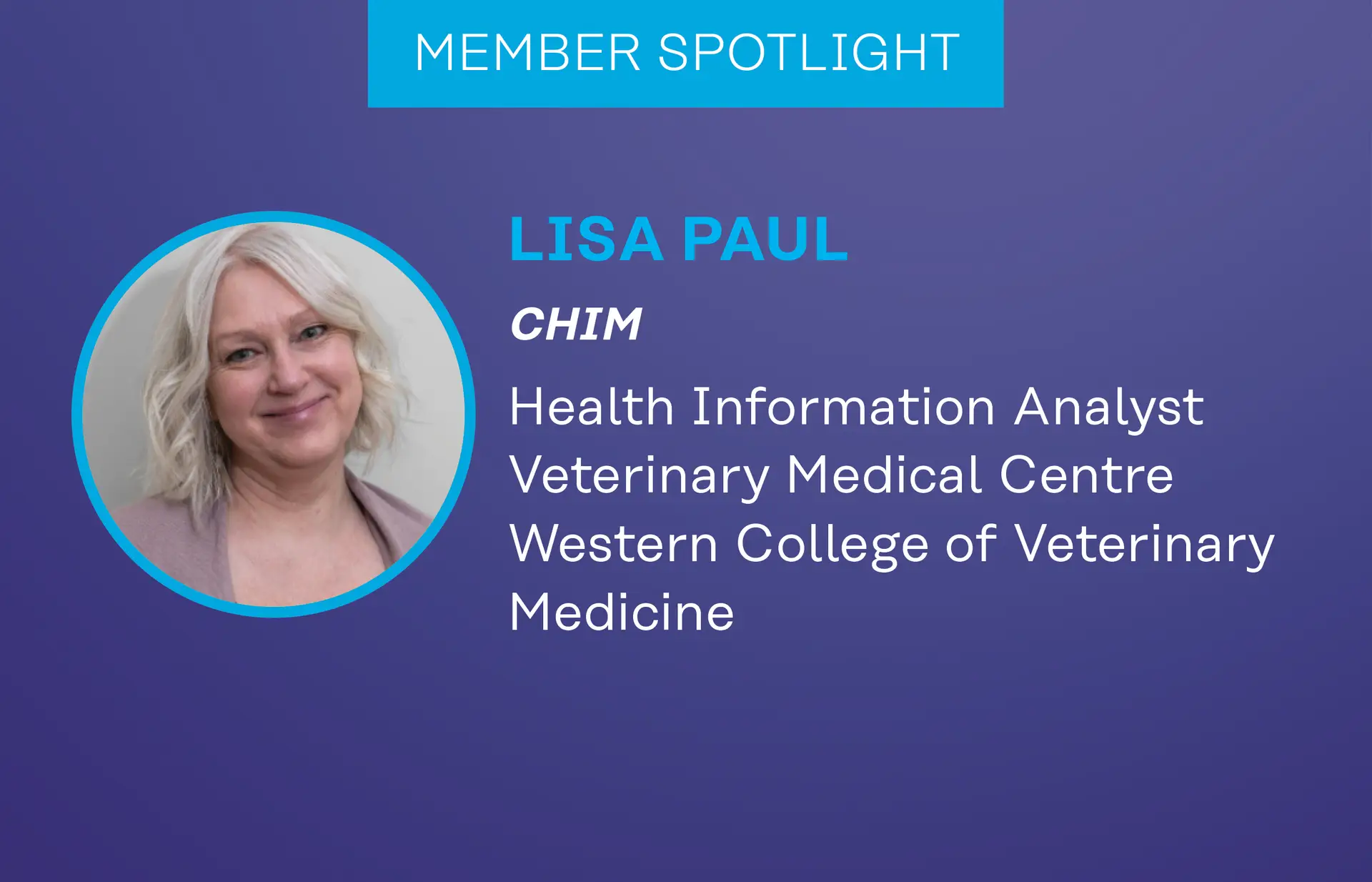More than an instructor: Courtney Sabo advocates for the HIM profession
Courtney Sabo’s foray into the health information management (HIM) field was a bit of a winding road. The Manitoba native and MBNU chapter committee member initially wanted to work with animals, starting as a dog groomer when she was just 18 and attending Red River College to become a veterinary technician—and that’s when her plan went awry.
“The job isn’t what most people think it is,” Courtney shares. Day in and day out she was on the front lines of animal care, handling serious emergencies. “I couldn’t do it long term; it was too much emotionally.” She returned to the Red River College program directory, where she stumbled upon HIM. The combination of technology and health care—but not front-line care—was just what Courtney was looking for.
A relative newcomer to the profession (she graduated in 2016), Courtney hasn’t yet been exposed to all the angles of HIM and continues to have ‘aha’ moments. Her biggest so far, though, came after she became the go-to for her peers when they had questions and sought direction. She thought, “Maybe I have the ability to teach people, and maybe they’re asking me these questions for a reason.” As she moved into coding, she took to training other coders and teaching them how to do things—so when the opportunity to become a coding tutor at Red River College arose, she jumped at it. “I knew right away: this is what I have to do,” she says.
As an instructor for Red River College’s HIM program, Courtney helps shape the new generation of HIM professionals. At the same time, she feels she has a responsibility to help address perhaps the most significant challenge facing the profession: recognition. She notes, “This is something Jeff [Nesbitt, CEO] speaks about a lot when he visits colleges, and I appreciate that.” Before she came across the program, she’d never heard of HIM. “Something is wrong there,” she says. “That’s why my job is perfect for me, because I have to be one of the biggest HIM advocates.”
So, what does that advocacy entail? For Courtney, it’s about educating others about the role of HIM professionals. “Through my job, I’m hoping to bring this career more into the light,” she shares. She encourages her students to tell people about what they do and highlight their unique skills—to show people what can be done with data that isn’t currently being used. Her hope is that promoting the profession will help employers and the public understand the value that HIM professionals bring to the table, which may also have a positive impact on starting wages for those entering the profession.
As the Canadian health care system deals with the coronavirus outbreak, Courtney feels that there is an opportunity to educate people about health care resources and how the system is working. HIM professionals have a strong understanding about resources and the health care system as a whole, and they play a critical role in situations like this one. It’s the coders working on the COVID-19 cases who provide data for the analysts—data that then moves on to support research and the work of organizations like CIHI. Without the numbers to look at, we can’t prepare for the future. It’s HIM professionals who manage the data to help us understand how to deal with things going forward. As Courtney says, “Not all heroes wear scrubs!”
Courtney’s passion for HIM is evident, and the profession is fortunate to have her as an advocate. “I feel lucky to have stumbled upon this career. It happened for a reason, and I ended up at the college for a reason,” she says. “I hope my students see that, and that I’ve motivated them as HIM professionals.”






